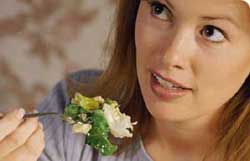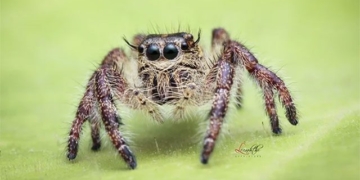In recent years, there has been an increasing number of studies regarding the link between diet and cancer. The list of foods accused of causing cancer continues to grow.
Foods convicted of causing cancer…
 |
|
Photo: BBC |
1. First are foods that have been treated with nitrates and nitrites for preservation. Some foods in our country, such as cured meats and sausages, also fall into this category because curing salt contains sodium nitrate.
Scientists have proven that nitrates and their breakdown products can combine with certain substances in the body to form nitrosamines, which have been linked to cancer.
The high levels of nitrates found in natural water sources in certain areas can also pose a risk. Recently, in the Szabolcs-Szatmár region of Hungary, there was a notably high incidence of stomach cancer deaths. Upon investigation, it was found that the natural water here contained extremely high levels of nitrates, exceeding 100mg/liter (the permissible standard is 6mg/liter). To prevent illness, Hungarian scientists had to implement measures to reduce nitrate levels in the water supply.
2. Moldy foods, particularly moldy peanuts, have been heavily condemned. Some molds secrete toxins, especially Aspergillus flavus, which produces the highly toxic aflatoxin. In addition to causing acute poisoning, aflatoxin is also one of the most dangerous carcinogens. Just ingesting a total of 2.5mg of aflatoxin over three months can lead to deadly liver cancer.
The Aspergillus flavus strain is found in many food products, especially peanut crops. Moldy peanuts almost always contain this strain.
Aflatoxin is very stable at high temperatures. When roasting moldy peanuts, the mold spores are killed, but the aflatoxin remains largely intact. Studies have shown that roasting peanuts at 150°C for 30 minutes only reduces the toxin by 60 to 80%. Thus, consuming roasted or boiled moldy peanuts remains hazardous.
In addition to Aspergillus flavus, we must be cautious of the Penicillium islandicum strain, which is primarily responsible for rice mold. Eating moldy rice can easily lead to chronic poisoning, potentially resulting in liver cirrhosis and liver cancer.
3. Foods colored with chemical dyes can not only cause poisoning but also cancer. In many countries, strict regulations dictate the use of permitted food colorings. However, in our country, the practice of dyeing food is often arbitrary. Many producers and restaurants use dyes and coloring agents, sometimes without knowing whether they are toxic or not, to make food and drinks visually appealing.
These random color additives can be harmful to consumers; those with high toxicity can cause acute poisoning shortly after consumption, while those with lower toxicity may not show immediate effects, leading to the accumulation of toxins over time, resulting in severe health issues such as chronic poisoning, cancer, or congenital disabilities.
…and foods to be cautious of
Numerous scientific studies have indicated that oils and fats heated for prolonged periods at high temperatures generate a variety of new chemical compounds, some of which can be carcinogenic. As such, it is advised not to reuse oils for frying too many times. After frying, pans must be thoroughly cleaned; otherwise, residual oils can contribute to the formation of cancer-causing substances in subsequent cooking.
Fried foods like shrimp cakes, doughnuts, and spring rolls should be fried in large amounts of oil, and all burnt food particles must be removed after each frying session. If reused, this oil should be limited to a few times only.
Currently, there are also concerns surrounding roasted and grilled meats. Professor Henry Joyeux, Director of the Nutrition and Cancer Laboratory in Montpellier (a recipient of an award for cancer research in 1985), states that when meat is roasted at high temperatures, fat drips into the fire and burns, creating benzopyrene that adheres to the meat’s surface, a known carcinogen. He recommends roasting meat with the heat source facing the meat to prevent fat from dripping directly onto the coals. This way, the fat collects on a plate beneath and does not burn or convert into benzopyrene.
Scientists have also studied charred grilled meat and found that burnt portions can easily produce carcinogenic compounds. Our country has many dishes that fall into this category, which require scientific assessment to find safer roasting and grilling methods.
These are foods identified by scientists as potentially carcinogenic; some have already been condemned, while others need further investigation. However, vigilance remains essential.
When discussing “diet and cancer” and foods that may cause cancer, we should also mention foods that can help prevent cancer. Many natural foods possess this protective quality. Through numerous studies, scientists worldwide agree that consuming a variety of fruits and vegetables significantly reduces cancer risk.
Among these scientists is Takeshi Hirayama, Head of the Epidemiology Department at the National Cancer Center Research Institute in Japan. He advises people to eat a diverse range of green vegetables daily to lower their cancer risk.
Professor Henry Joyeux, in his book “Diet and Cancer,” also recommends increasing fruit and vegetable intake to prevent cancer. This conclusion is increasingly supported by evidence. Numerous studies indicate that consuming fruits and vegetables can counteract the effects of carcinogens at the cellular level, thereby slowing or halting the disease’s progression. Clearly, diet plays a crucial role in cancer prevention.
Pans and pots must be thoroughly cleaned after cooking; otherwise, residual oils can easily contribute to the formation of cancer-causing substances in subsequent meals.


















































